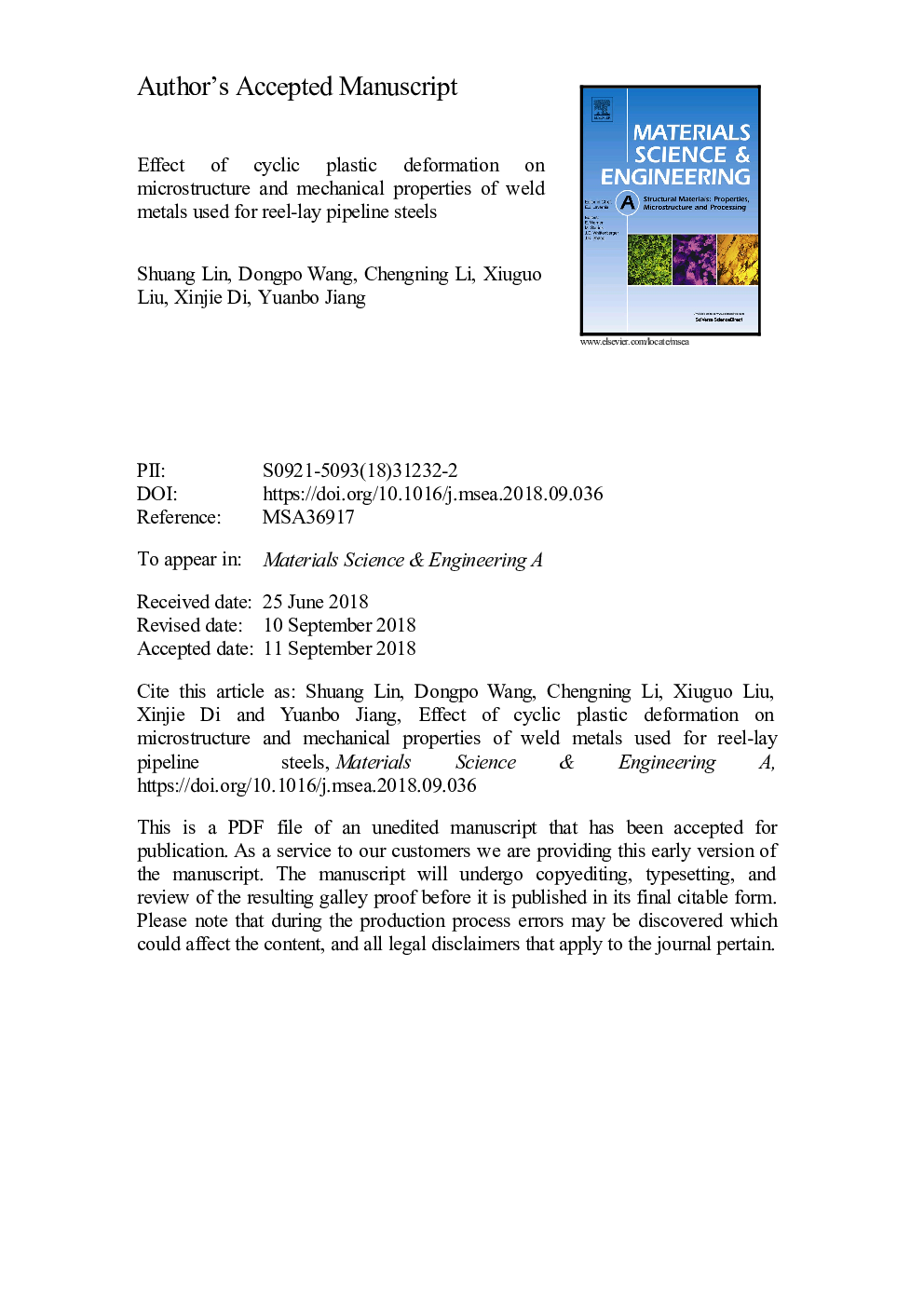| Article ID | Journal | Published Year | Pages | File Type |
|---|---|---|---|---|
| 10155887 | Materials Science and Engineering: A | 2018 | 29 Pages |
Abstract
Reel-lay process is an efficient and economic method for installing offshore pipelines. During reel-lay process, cyclic plastic deformation (CPD) is introduced into the pipeline and it will modify the mechanical properties of the pipeline steels. In this research, cyclic tension-compression plastic deformation was conducted on the weld metals of X60 pipeline to simulate the strain experienced in reel-lay process. Then the dislocation configurations and mechanical properties of the weld metals were investigated after CPD. The total dislocation density was increased by the CPD process. The dislocation configurations evolved from dislocation lines and tangles into dislocation walls under 2% CPD and dislocation cells upon 5% CPD, respectively. The formation of dislocation walls and cells was a dynamic process, in which dislocation multiplication and intersection competed with dislocation annihilation. The yield platform of the weld metals disappeared and the yield strength decreased after CPD, but the tensile strength had no obvious change with CPD. The work hardening ability and uniform elongation rate reduced with the CPD level. The reduction of work hardening ability was mainly associated with the disintegration of dislocation wall or cell structure during tensile tests.
Related Topics
Physical Sciences and Engineering
Materials Science
Materials Science (General)
Authors
Shuang Lin, Dongpo Wang, Chengning Li, Xiuguo Liu, Xinjie Di, Yuanbo Jiang,
